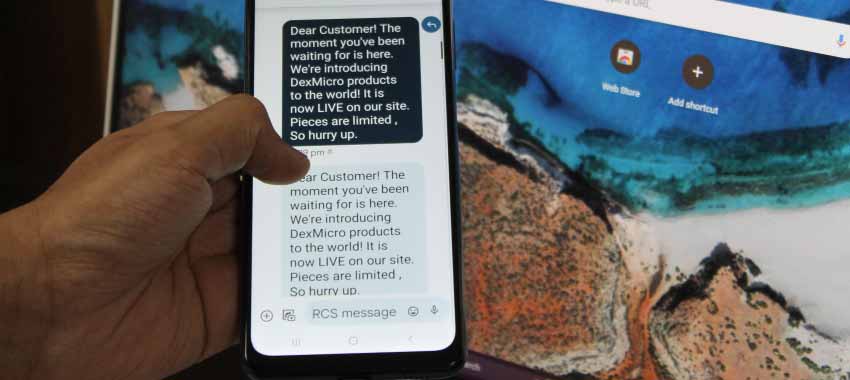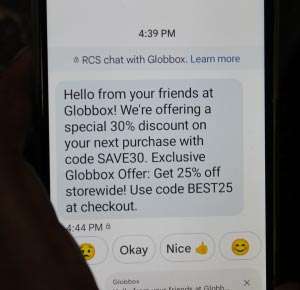Send SMS Messages to International Mobile Numbers
To send SMS messages to international mobile numbers using PC to mobile SMS, you will typically need to follow these steps:
-
STEP:-1 Choose a PC to mobile SMS service provider that offers international messaging capabilities. Research different providers to compare pricing, features, and coverage areas.
-
STEP:-2 Register for an account with your chosen provider and follow their instructions to set up your account and payment options.
-
STEP:-3 Prepare your message content and select the recipients you wish to send the message to. Make sure to include the correct country code and phone number format for each recipient.
-
STEP:-4 Use the SMS gateway provided by your chosen service provider to send the messages from your PC to the mobile phones of your intended recipients. You may be able to send messages in bulk or schedule messages to be sent at a later time.
-
STEP:-5 Monitor the success of your SMS campaign and adjust your messaging and targeting as needed to improve engagement and conversion rates.
Ensuring for Privacy and Security of The SMS Messages
When sending SMS messages from a PC to a mobile phone, privacy and security are important factors to consider. The following are some ways to ensure that your SMS messages are secure and private:
-
Use a secure SMS gateway:
Ensure that you use a reputable and secure SMS gateway to send your messages. A secure SMS gateway will encrypt your messages and ensure that they are delivered securely to the recipient's mobile phone.
-
Password protection:
Password protect your PC and the application or software you use to send SMS messages. This will help prevent unauthorized access to your SMS messages and the recipient's phone number.
-
Two-factor authentication:
Use two-factor authentication to ensure that only authorized users can access your SMS messaging software. Two-factor authentication typically requires a password and an additional authentication factor such as a fingerprint or a security token.
-
Use end-to-end encryption:
Use end-to-end encryption to ensure that your SMS messages are encrypted from the time they leave your PC until they are received by the recipient's mobile phone. This will help prevent interception and eavesdropping of your SMS messages.
-
Secure your Wi-Fi network:
Ensure that your Wi-Fi network is secure and protected with a strong password. This will help prevent unauthorized access to your SMS messages and the recipient's phone number.
-
Delete messages:
Delete your SMS messages from your PC after they have been sent. This will help prevent unauthorized access to your SMS messages and the recipient's phone number as well.
-
Use a VPN:
Use a Virtual Private Network (VPN) to encrypt your internet connection and protect your online activity. This will help prevent hackers and unauthorized users from intercepting your SMS messages and other online activity.
In Conclusion, privacy and security are important factors to consider when sending SMS messages from a PC to a mobile phone. By following the above best practices, you can ensure that your SMS messages are secure and private.
Sending Multimedia Messages (MMS) Using PC to Mobile SMS
PC to mobile SMS is a popular way to send text messages from a computer to a mobile phone. However, unlike SMS, multimedia messages (MMS) are not as widely supported by PC to mobile SMS services. In this article, we will discuss the use of MMS in PC to mobile SMS and its capabilities.
MMS messages are a form of messaging that allow the sender to include multimedia content such as images, videos, and audio files in their messages. MMS messages have a much higher limit for the size of the message than SMS messages, allowing for larger content to be sent to the recipient's mobile phone. MMS messages are typically sent using mobile networks and are charged at a higher rate than SMS messages.
PC to mobile SMS services generally do not support the sending of MMS messages due to limitations in the technology used for SMS messaging. MMS messages require a multimedia messaging service (MMS) center, which is a separate entity from the SMS center used for traditional text messages. In order to send MMS messages from a PC to a mobile phone, a more advanced messaging service is required that allows for the inclusion of multimedia content.
There are some PC to mobile SMS services that do support the sending of MMS messages. These services typically require a special software or application to be installed on the user's computer, which allows for the creation and sending of MMS messages. Some of these services may also require the user to have a mobile phone connected to their computer in order to send MMS messages.
The cost of sending MMS messages via PC to mobile SMS services may vary depending on the service provider and the location of the recipient's mobile phone. MMS messages are typically charged at a higher rate than SMS messages due to the inclusion of multimedia content. The user should check with their service provider for the exact cost of sending MMS messages via PC to mobile SMS.
Benefits of MMS Messages:-
One of the benefits of using MMS messages in PC to mobile SMS is the ability to include multimedia content in the message. This can be useful for businesses or individuals who want to send messages that require visual aids or other multimedia content. For example, a business may want to send a promotional message that includes an image of their product or service.
Another benefit of using MMS messages in PC to mobile SMS is the higher message size limit. This allows for the inclusion of larger multimedia files in the message, such as high-resolution images or longer videos. This can be useful for businesses or individuals who want to send more complex messages that require larger files.
In conclusion, while PC to mobile SMS services do not generally support the sending of MMS messages, there are some services that do allow for the creation and sending of MMS messages from a computer to a mobile phone. The use of MMS messages in PC to mobile SMS can provide benefits such as the inclusion of multimedia content and higher message size limits. The cost of sending MMS messages via PC to mobile SMS may vary depending on the service provider and the location of the recipient's mobile phone.
The Maximum Number of Recipients for PC to Mobile SMS
PC to mobile SMS or bulk SMS services have become increasingly popular among businesses due to their ability to reach a large audience instantly and cost-effectively. However, there are limitations on the maximum number of recipients that can be reached at one time. In this response, we will explore the maximum number of recipients for PC to mobile SMS and factors that can impact it.

The maximum number of recipients for PC to mobile SMS can vary depending on the service provider and the country where the SMS is being sent. Generally, bulk SMS providers allow businesses to send SMS messages to thousands or even millions of recipients at once. However, there are limits imposed by telecom operators to prevent spam and protect the privacy of their subscribers.
In the United States, for example, the Federal Communications Commission (FCC) has set guidelines for commercial SMS messaging. According to these guidelines, businesses must obtain consent from the recipient before sending marketing messages, and each message must include an opt-out mechanism. Additionally, messages must be sent during reasonable hours and in compliance with other regulations, such as the Telephone Consumer Protection Act (TCPA).
In terms of the maximum number of recipients, telecom operators in the US typically limit the number of SMS messages that can be sent to a single mobile number in a given period. This limit can vary, but it is usually between 200 and 500 messages per day. This means that if a business wants to send an SMS message to a large audience, it would need to use a bulk SMS provider that can distribute the messages across multiple mobile numbers.
In other countries, the maximum number of recipients for PC to mobile SMS can also vary depending on local regulations and telecom operator policies. For example, in India, the Telecom Regulatory Authority of India (TRAI) has set a limit of 100 SMS messages per day for promotional SMS messages, while transactional SMS messages have no such limit.
Factors that can impact the maximum number of recipients for PC to mobile SMS include the following:
-
Consent:
Businesses must obtain the consent of the recipients before sending them SMS messages. This means that the recipient must have opted in to receive SMS messages from the business, either by subscribing to a service or by providing their contact information through a form or other means.
-
Content:
The content of the SMS message must comply with local regulations and best practices. For example, in the US, messages must not contain misleading or false information, and they must not promote illegal or harmful activities.
-
Opt-out mechanism:
Each SMS message must include an opt-out mechanism that allows recipients to unsubscribe from future messages. This can be done by providing a reply keyword or a link to a web page where the recipient can opt out.
-
Telecom operator policies:
Telecom operators can impose limits on the number of SMS messages that can be sent to a single mobile number in a given time period. This can impact the maximum number of recipients for PC to mobile SMS message.
In summary, the maximum number of recipients for PC to mobile SMS can vary depending on local regulations, telecom operator policies, and best practices. Businesses must obtain consent from recipients, include an opt-out mechanism in each message, and comply with local regulations to ensure that their PC to mobile SMS campaigns are successful and effective.
Posted By: Techsavvy | Updated On:
